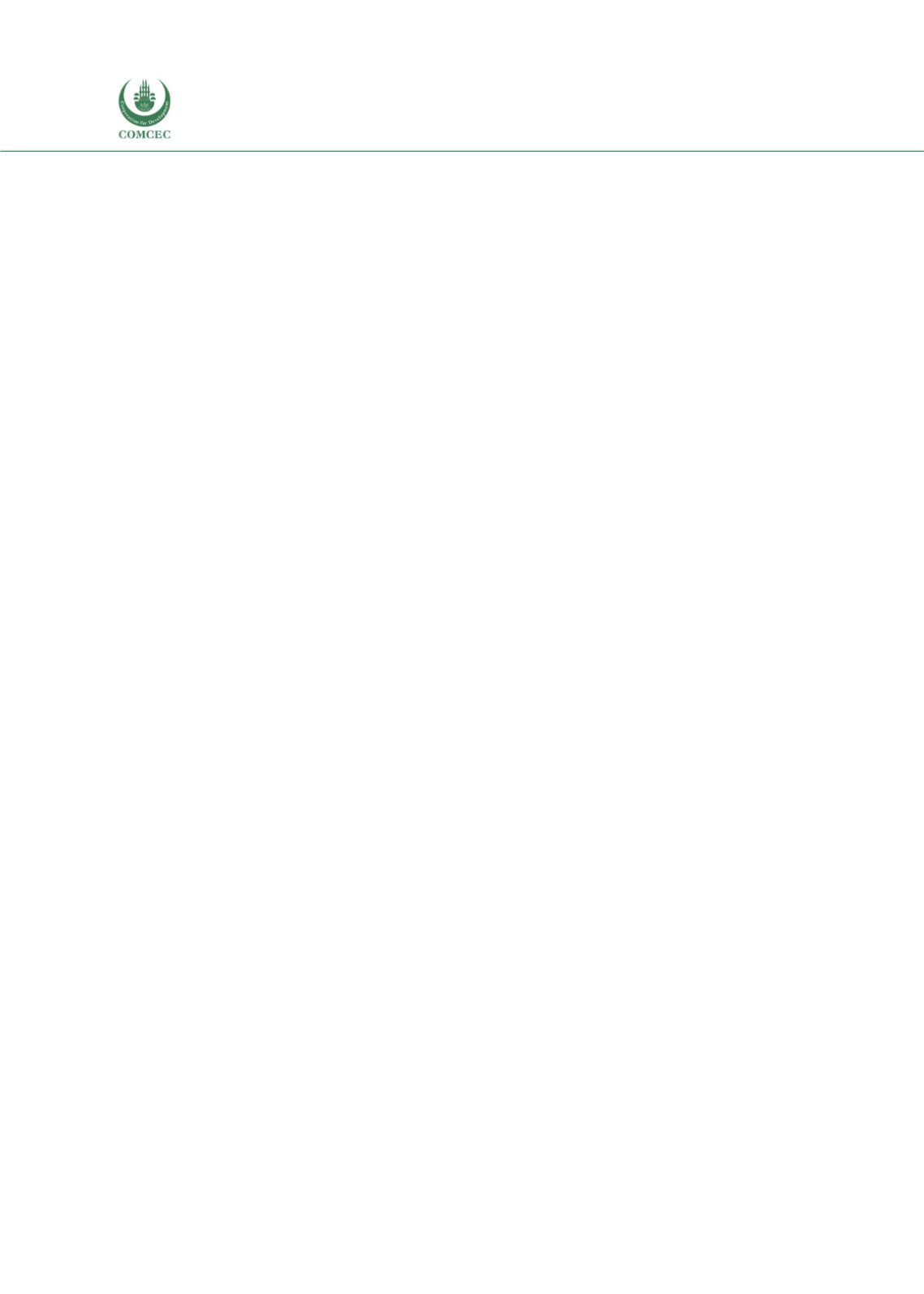

Reviewing Agricultural Trade Policies
To Promote Intra-OIC Agricultural Trade
164
With regards to the top import agricultural products from the OIC markets, the case study
countries present a diverse set of commodities as well. Similar to the top export items, it is
possible to observe the potential product divisions selected in Section 3.4 of the report for
promoting intra-OIC trade. For example, oil seeds for Turkey; feeding stuff for animals for
Morocco; and sugar for Chad are among the potential products for the promotion of intra-OIC
trade. The Gambia, Brazil and Thailand’s top import products do not include any of these
selected potential products.
The export markets and import markets within the OIC present a diverse set as well. It seems
that geography plays a large role in selection of export markets. For instance, judged by the top
5 markets, Turkey exports to Iraq, Syria, S. Arabia, Iran, Sudan; Morocco exports to Turkey,
Lebanon, Cote d’Ivoire, Mauritania, Syria; the Gambia exports to Turkey, Lebanon, Cote d’Ivoire,
Mauritania, Syria; Chad exports to Turkey, Indonesia, Nigeria, Bahrein, Egypt; Thailand exports
to Malaysia, Indonesia, Benin, Nigeria, S. Arabia; and Brazil exports to S. Arabia, Iran, Egypt, UAE,
Indonesia. The selected countries’ major export and import markets are non-OIC countries
where the share of the non-OIC countries in exports range from 62% to 93% in 2016. The share
of non-OIC countries in OIC imports presents a similar picture where the non-OIC share in case
study countries’ import of top 5 agricultural products range from 45% to 98% in 2016.
Agricultural trade policies
The review of agricultural trade policy measures indicates that, while countries generally
lowered the applied tariff rates they impose in agricultural products in recent decades, there
still are cases where high average applied tariff rates are observed for certain product divisions
and products. For their top export products, the countries are faced with high tariff rates in the
OIC market. For example, Turkey faces high tariff rates for beverages and tobacco exports in the
OIC market. Morocco faces high tariff rates for its sugar exports since sugar is highly protected
in the OIC markets along with oil seeds where Chad is faced with high tariff rates from the OIC
countries. Consistent with the discussion in Chapter 3 of the report, the highest tariff protection
in the OIC market is for oil seeds and sugar. Thailand is also impacted by the high tariff rates on
sugar in the OIC market. There is a significant room for reducing the tariff rates on oil seeds and
sugar.
Among the case study countries, there has been a reduction in tariff rates applied to the top
imports originating from the OIC countries. For example, Turkey reduced tariff rates for coffee,
oil seeds, vegetables & fruits; Morocco reduced tariff rates for vegetables and fruits, oils, fats,
waxes, coffee, beverages and tobacco; the Gambia reduced tariff rates for beverages and tobacco;
Chad reduced tariff rates for coffee, cereals, misc. products. Although the tariff reduction is a
good sign for trade integration and promotion of free trade, the OIC countries’ reduction in
already high tariff lines is still in need for closer examination. On the contrary, the two non-OIC
countries, Thailand and Brazil have already low levels of tariff protection where they reduced
their tariff rates even more drastically.
The NTMs in certain product groups such as animals and vegetables are observed to have
extremely high coverage ratios, e.g., larger than 95% or 99%, indicating that almost the entirety
of trade in these products is affected by the existing NTMs.
The analysis of the trade agreement matrix along with the preferential tariffs and top trade
partners show that not all case study countries are highly integrated with their top trade
partners. The number of preferential trade agreements across the OIC countries is vast as
demonstrated in previous sections of this report. For example, the number of preferential trade
agreements with the OIC countries is 8, 16, 11, 2 for Turkey, Morocco, the Gambia and Chad. The
















